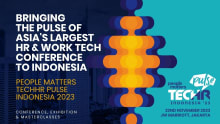A case for looking at ‘irrelevant’ work experience

Here is a short introduction of Ken Kocienda, the software engineer who worked with Steve Jobs on the Apple iPhone and iPad projects.
Ken Kocienda was a software engineer and designer at Apple for over fifteen years. After graduating from Yale [Bachelor of Arts], he fixed motorcycles, worked in the editorial library of a newspaper, taught English in Japan, and made fine art photographs. Eventually, he discovered the internet, taught himself computer programming, and made his way through a succession of dot-com-era start-ups, before landing at Apple in 2001, where he worked on the software teams that created the Safari web browser, iPhone, iPad, and Apple Watch.
Now, you might wonder what is an arts major and a self-taught computer programmer doing at Apple, and that too as one of the 25 members who designed the ground-breaking iPhone? It’s the classic round peg in a square hole, and yet the profile of Kocienda is typical of folks at Apple, and elsewhere at innovative organizations. Innovators actively look for ‘irrelevant’ work experience; people who could bring more than what meets the eye and what the resume suggests. In the words of Microsoft CEO Satya Nadella, “We need not just value differences but also actively seek them out, invite them in. And as a result, our ideas will be better, our products will be better, and our customers will be better served.”
Our evolution has taught us one thing that we humans are the agents of creation and not the engines of productivity. But does this realization reflect in our hiring strategies? Sadly, no. We still hire for predictability and not serendipity. We look at consistency and not variance, and, this way, we inadvertently still value productivity over creativity, often to our own undoing. If you are more likely to seek relevant work experience, you are missing out on the most important insurance against your corporate irrelevance? You need to bring more variety into the mix of innovation if you wish to heighten your odds of relevance in the fast-changing social, economic and technological milieu. And this article tells you how.
According to research from McKinsey and Deloitte, the companies that attract, foster, and retain diverse teams tend to outperform their peers on critical business matrices. They have up to 20 percent higher rate of innovation and 19 percent higher innovation revenues. They demonstrate a greater ability of spotting and reducing business risks and consequently, they are 25 to 36 percent more likely to outperform on profitability.1 And yet diversity is mostly tolerated instead of being invited.
There are three reasons why most leaders and HR professionals actively seek relevant work experience and most shy away from giving off-beat profiles a fighting chance. Firstly, a relevant work experience promises a faster time-to-productivity and low learning expenses for the organization. Secondly, a relevant work experience (falsely) indicates valuable expertise, a realization that comes late and costly. Thirdly, ready roles aren’t available for talent that is deviant or not from the mold. So, why struggle with somebody different, rather it’s wiser to settle for the tried and tested, and that’s where we are stepping into the shoes of machines.
If it is about solving a known problem with predictable accuracy, who’s better: man or machines? I guess it would be machines and by a fair margin. In the human-machine symbiosis, one must understand Moravec’s paradox: machines and humans frequently have opposite strengths and weaknesses. Machines are better at handling tactics such that humans can focus on strategy and the big picture.
As David Epstein, in his book Range, offers, “The bigger the picture, the more unique the potential human contribution. Our greatest strength is the exact opposite of narrow specialization. It is the ability to integrate broadly.” On how a diversity of experience is more valuable when faced with complex problems, Epstein contends, “facing uncertain environments and wicked problems, breadth of experience is invaluable. Facing kind problems, narrow specialization can be remarkably efficient. The problem is that we often expect the hyper-specialist, because of their expertise in a narrow area, to magically be able to extend their skill to wicked problems. The result can be disastrous.”
It seems that narrow specialization and relevant work experience is doing us more harm than good. There are three broad suggestions for human resources functions and organizational leadership. Firstly, actively seek talent which is different such that the organizational vitality could be improved and so could be its survivability. Think of mutation, the same force that helps the more versatile species survive the cruel selection process of nature. The more diverse an organizational workforce is the greater are the chances for the firm to survive the uncertainty.
Secondly, foster a culture of risk tolerance and operational freedom. For that, an organization must have few and clear guidelines and routines that can take care of human variations. If you don’t want to hire talent which behaves predictably, have routines that can increase the predictability of the outcome, while letting employees experiment.
Finally, there’s a need for both experience and expertise, but also “deliberate amateurs” who can connect seamlessly across domains to generate new ideas. As Frans Johansson, the author of The Medici Effect, notes, “Too much expertise… can fortify the associative barriers between fields. At the same time, expertise is clearly needed to develop new ideas, to begin with.” We need a few experts and the rest as T-shaped employees, those who can span domains with ease. So, the next time you look out for talent, try to discount the similarity between what you have and what the candidate brings and seek for unique attributes, the upside that the person could bring, for machines can take care of the rest, and rather cheaply.

















